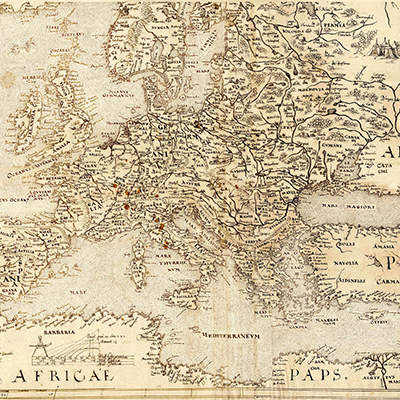
Grape School: Pinot Noir Part Two: The Old World
Tackling all the Pinot Noirs of the Old World is a hefty task for one article. After all, whole books could be written about single Burgundy vineyards. However, in interest of giving a starter overview we will cover the important Pinot Noirs of France, Germany, and Italy.Burgundy is of course the ultimate source of Pinot Noir—for some wine lovers nothing can out-do a fine Bourgogne. Even within the Côte d’Or though, there are myriad different styles of the wine. It is a land divided into ever-smaller lots by history. After Napoleonic law with each passing generation, vineyards were split evenly between siblings. As a result the owners of vines in vineyard may lay claim to as little as a row of vines.
It is here that the terroir is of utmost importance. Whether it is the east-facing and southeast-facing slopes of the Côte de Nuit and Côte de Beaune, respectively, that purportedly gave the Côte d’Or its name (“Or” for Orient, an admittedly problematic and passé way to speak of the east), or the limestone marl upon which Pinot Noir thrives, Burgundy contains a certain idiosyncratic magic that shape shifts from plot to plot.
Furthermore, the division of vineyards into villages, crus, clos, lieux-dits and so on can make Burgundy an ever-mysterious region to conquer. For those that buy premium wine, the focus will no doubt be on the producers of the grand and premier crus. Stylistically, these are more likely to have power and concentration, with more new oak in the mix than seen in basic Bourgogne.
The Loire valley is also a source of quality Pinot noir. While perhaps best known for its vibrant Sauvignon Blanc, particular, Sancerre also is a source of both Pinot Noir wines, both red and rosé. One need only to look to the soil to see why, the famed “Les Caillottes” and “Terres Blanches” are limestone-rich, much as one sees in Burgundy. Vincent Pinard and Lucien Crochet are producers to take note of.
Perhaps not the first place one thinks of as a Pinot Noir source, at first blush, is Champagne, as it is not so obvious to the naked eye that there are red grapes involved in many of these sparkling wines! The region of Montagne de Reims, more of a large plateau than a mountain, is the source of many of the fine Pinot Noir grapes, although many producers will look south the Côte des Bar where the Pinot Noir is riper and fuller, making it an important addition to blends that might otherwise be too austere.
We forget that fine Pinots can come from Germany, too. They fly under the radar, going by the name of Spätburgunder. The warming climate has certainly been a great help to the grapes’ ability to ripen there although interestingly enough, some of the best examples come from both the most northerly and southerly regions. The Ahr is north even of Mosel, yet warmer, as its steep volcanic slate soils contribute warmth and the Eifel Mountains shield it from the cold. Baden is warmer by virtue of latitude, and likewise able to create lovely Spätburgunder. All in all, German Pinots are known to be a bit more austere and acidic, less likely to be treated to excess of oak. As the Parkerization of the world affected winemaking choices in Burgundy and California (riper fruit more oak), one might consider that when it comes to Pinot Noir, Germany may someday be the new Burgundy—if not in reverence then in style. August Kesseler, Rudolph Furst, and Bernard Huber are all producers to seek.
Lastly, fine Pinot Noir can be found thriving in Italy, where they sometimes goby the name of Pinot Nero. Like Champagne, some of Pinot Noirs finest work goes in the disguise of blanc bubbles. Franciacorta is regarded by many as the top source for traditional method sparkling wine in Italy, with producer Ca del Bosco leading the charge. However, Trentodoc Metodo Classico, so named for the town of Trento and being a DOC, is up and coming.
You have your Pinot Noir homework cut out for you! In the next article in the series we’ll take a look at how Pinot Noir fairs in the New World. Cheers!



